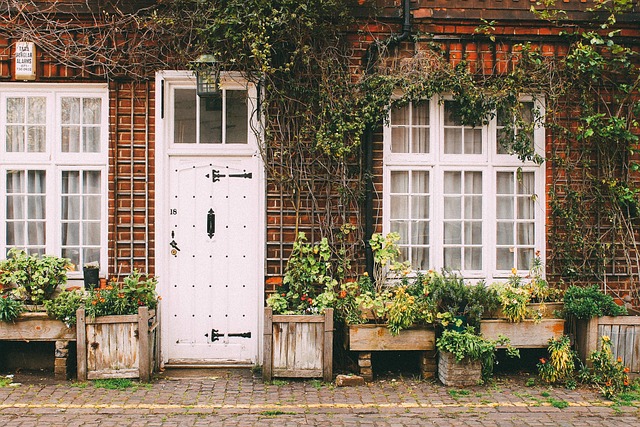Adopting eco-friendly DIY projects is an accessible way to reduce waste and minimize environmental impact. Using sustainable building materials like bamboo, recycled metal, and natural insulations not only enhances aesthetics but also supports green practices. Upcycling old items offers a cost-effective approach to creating unique, stylish pieces while saving money and reducing waste. Simple composting and recycling strategies, coupled with the use of recycled materials for home upgrades, can transform any space into an eco-friendly oasis, contributing to a greener planet.
Looking to make your home more sustainable? Discover a wealth of DIY ideas that can transform your living space into an eco-friendly haven. From reducing waste with innovative upcycling techniques and composting strategies to enhancing energy efficiency through smart insulation and solar panels, this guide explores practical steps for an eco-conscious lifestyle. Embrace water conservation methods, cultivate your own food, and support sustainable businesses to create a greener home inside and out. Dive into these DIY projects and embark on a journey towards an eco-friendly future with these simple, yet powerful upgrades.
Reducing Waste: Eco-Friendly Materials and Practices
Reducing waste is a significant aspect of creating a sustainable home, and one of the best ways to achieve this is by adopting eco-friendly materials and practices during your DIY projects. Opting for natural, renewable resources such as bamboo, hemp, or recycled metal not only minimizes environmental impact but also adds unique aesthetics to your space. For instance, consider using reclaimed wood for flooring or furniture, which gives a distinctive look while reducing the demand for new timber.
Simple changes like switching to energy-efficient light bulbs, installing low-flow faucets and showerheads, or adopting compostable waste bins can make a substantial difference in waste reduction. Additionally, DIY enthusiasts can explore making their own cleaning products using natural ingredients like vinegar and baking soda, eliminating the need for chemical-laden store-bought alternatives. These eco-friendly home upgrades not only contribute to a greener planet but also offer cost savings and healthier living environments.
– Exploring sustainable building materials
When considering an eco-friendly home upgrade, one of the best places to start is by exploring sustainable building materials. There are numerous options available that not only reduce environmental impact but also enhance the aesthetics and value of your property. For instance, using recycled or reclaimed wood for flooring or furniture not only cuts down on deforestation but also adds a unique charm to your space. Alternatively, opt for natural, non-toxic insulations like wool or cellulose, which are highly effective at retaining heat while being gentle on the planet.
Stone, clay, and bamboo are other versatile materials that can be used for various purposes, from walls and countertops to flooring and decorative elements. These materials are not only durable but also have a low carbon footprint. Furthermore, incorporating green building materials encourages innovation and supports local industries focused on sustainable practices, making your home upgrades not just eco-friendly but also economically sound in the long run.
– Upcycling old items for new purposes
Giving new life to old items is an excellent way to reduce waste and create unique, eco-friendly home upgrades. Upcycling allows you to transform discarded furniture, appliances, or even everyday objects into functional and stylish pieces. For instance, an old wooden crate can become a chic coffee table or a set of drawers, while an outdated shirt can be crafted into a cozy rug. This creative process not only saves money but also contributes to a greener planet by decreasing the demand for new resources.
By repurposing items, you can add character to your home while minimizing your environmental footprint. It’s a win-win situation! There are countless online resources and DIY communities sharing ideas for various upcycling projects, catering to different skill levels and preferences. So, whether you’re a seasoned crafter or just starting, embracing the art of upcycling is an accessible way to embrace sustainability in your home.
– Composting and recycling strategies for the home
Transform your home into an eco-friendly haven with simple yet effective composting and recycling strategies. Start by setting up dedicated areas for organic waste collection—a small bin in your kitchen, perhaps—and educate all household members on what can be composted, including food scraps, yard trimmings, and even coffee grounds. This not only reduces landfill waste but also creates nutrient-rich soil for gardening.
For recycling, invest in clear, labeled bins for paper, plastic, glass, and metal. Ensure everyone knows which items go into each bin. Consider using recycled materials for eco-friendly home upgrades; from shower curtains to furniture, there are numerous options available today. This dual approach of composting and recycling contributes significantly to a greener lifestyle, making your home more sustainable without breaking the bank.
Transforming your home into an eco-friendly haven is not only beneficial for the environment but also offers a unique opportunity to showcase your creativity. By adopting DIY strategies, you can reduce waste, promote sustainability, and create a more environmentally conscious living space. From upcycling old items to exploring sustainable building materials, these simple yet effective techniques contribute to a greener lifestyle. Embracing these eco-friendly home upgrades not only reduces your carbon footprint but also adds a touch of personalized charm to your living environment.
